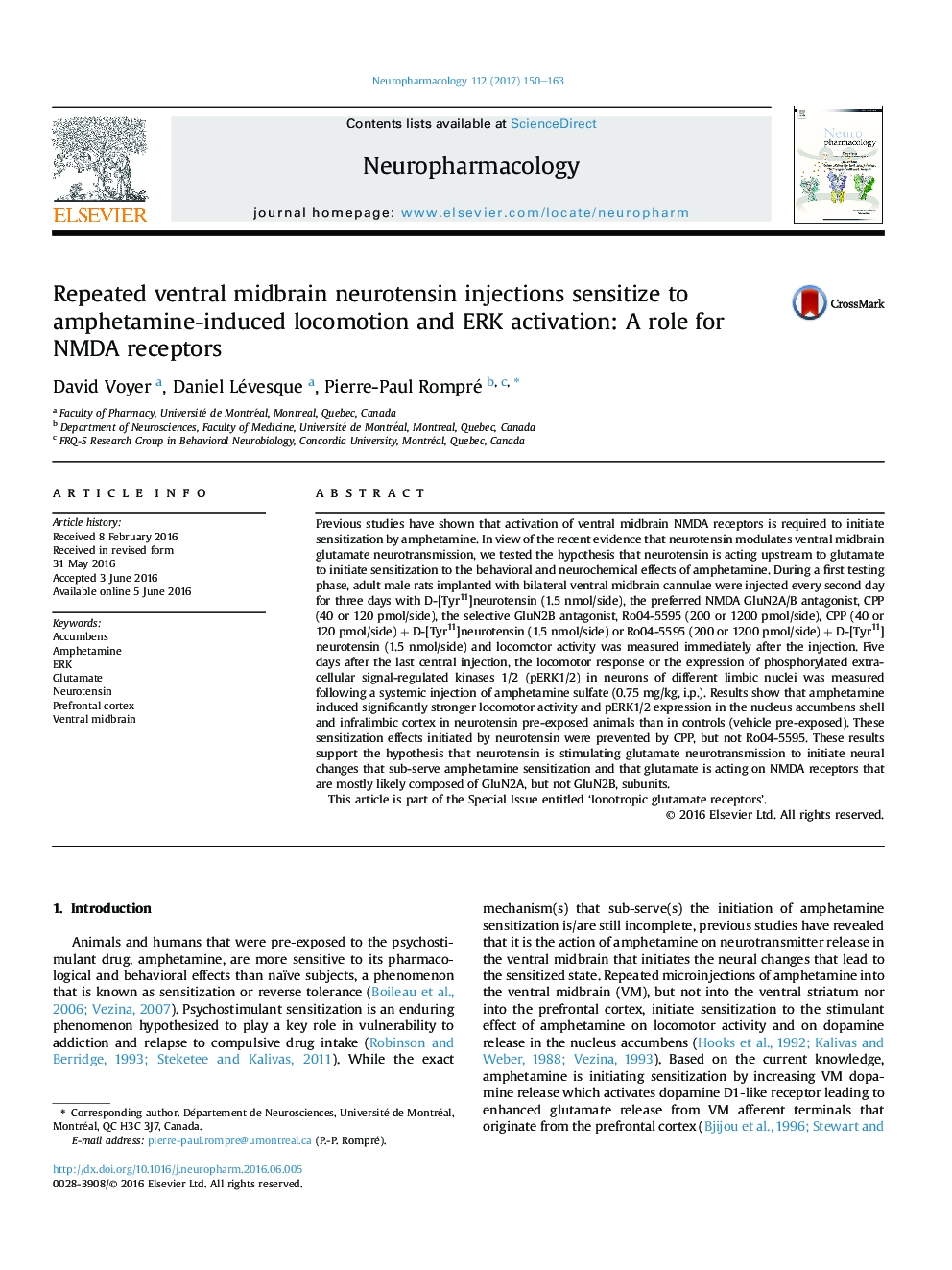| Article ID | Journal | Published Year | Pages | File Type |
|---|---|---|---|---|
| 5549111 | Neuropharmacology | 2017 | 14 Pages |
â¢Neurotensin sensitizes to amphetamine-induced locomotion and ERK1/2 activation.â¢Neurotensin-induced sensitization requires ventral midbrain NMDA receptor activation.â¢NMDA receptors involved are devoid of the GluN2B subunits.â¢Acute neurotensin-induced locomotion does not require NMDA receptor activation.
Previous studies have shown that activation of ventral midbrain NMDA receptors is required to initiate sensitization by amphetamine. In view of the recent evidence that neurotensin modulates ventral midbrain glutamate neurotransmission, we tested the hypothesis that neurotensin is acting upstream to glutamate to initiate sensitization to the behavioral and neurochemical effects of amphetamine. During a first testing phase, adult male rats implanted with bilateral ventral midbrain cannulae were injected every second day for three days with D-[Tyr11]neurotensin (1.5Â nmol/side), the preferred NMDA GluN2A/B antagonist, CPP (40 or 120Â pmol/side), the selective GluN2B antagonist, Ro04-5595 (200 or 1200Â pmol/side), CPP (40 or 120Â pmol/side)Â +Â D-[Tyr11]neurotensin (1.5Â nmol/side) or Ro04-5595 (200 or 1200Â pmol/side)Â +Â D-[Tyr11]neurotensin (1.5Â nmol/side) and locomotor activity was measured immediately after the injection. Five days after the last central injection, the locomotor response or the expression of phosphorylated extracellular signal-regulated kinases 1/2 (pERK1/2) in neurons of different limbic nuclei was measured following a systemic injection of amphetamine sulfate (0.75Â mg/kg, i.p.). Results show that amphetamine induced significantly stronger locomotor activity and pERK1/2 expression in the nucleus accumbens shell and infralimbic cortex in neurotensin pre-exposed animals than in controls (vehicle pre-exposed). These sensitization effects initiated by neurotensin were prevented by CPP, but not Ro04-5595. These results support the hypothesis that neurotensin is stimulating glutamate neurotransmission to initiate neural changes that sub-serve amphetamine sensitization and that glutamate is acting on NMDA receptors that are mostly likely composed of GluN2A, but not GluN2B, subunits.This article is part of the Special Issue entitled 'Ionotropic glutamate receptors'.
